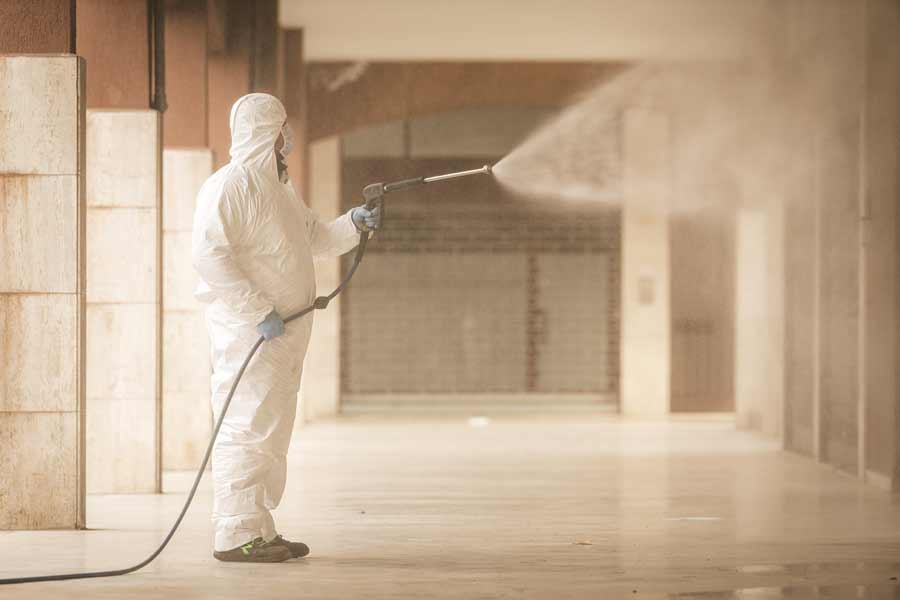

The activities of Logistica Ambientale Srl are not only related to waste management.
Training of specialized personnel, technologies, products, and equipment allow us to meet any requests also in the field of sanitation, disinfection, disinfestation, and rodents control.
Through targeted inspections and subsequent scheduled monitoring, we are able to provide tailor-made services, both inside schools, hospitals, restaurants, etc., as well as in open environments such as squares, gardens, parks, etc. using certified products duly authorised by the Health Ministry.
Art. 1 letter b. of MD 274/97 defines the disinfection as follows: «[…] the procedures and operations aimed at making healthy some confined environments and nearby areas by destroying or inactivating the pathogenic microorganisms”.
Namely, it consists in using disinfecting chemical, physical or mechanical procedures, able to reduce, by destruction or inactivation, the microbiological load than can be found on both objects and surfaces.
The disinfection must be preceded by cleaning operations in order to prevent dirt residues from compromising its effectiveness.
The regulatory framework (art. 1 letter e. of Ministerial Decree 274/97) defines sanitization as follows «the procedures and operations aimed at making some environments healthy by cleaning and/or disinfecting and/or disinfesting or by checking and improving the microclimate conditions as far as temperature, humidity ventilation, lighting and noise are concerned».
The sanitizing of work environments is mandatory. Each company is required to ensure the daily cleaning and the periodic sanitization of its premises, environments, workstations, and common areas.
The cleaning, sanitizing and disinfection represent the three steps of the procedure for eliminating dirt, bacteria, and pathogens.
If the goal of cleaning is to remove any kind of “visible” dirt (dust, grease, or liquids) from surfaces, sanitization is aimed at eradicating bacteria and pathogens, in order to ensure low risk of infection and specific limits of microbial load.
But it’s the use of disinfectant procedures (chemical, physical, mechanical) that makes it possible to reduce the bacterial load of environments and surfaces to a level unharmful to humans at all.
Ultimately, the use of sanitizing substances can be complementary to the cleaning procedures and the environmental optimization or can be integrated to the disinfection activities.
The procedure aimed at resolving and/or containing the presence of animals, insects and plants is defined as disinfestation. The EU Regulation n.528/2012 of the European Parliament and of the European Council, which replaces the “Biocides Directive” (Directive 98/8/EC of the European Parliament and of the European Council), is the fundamental European regulation for disinfestation, which is implemented in Italy by the Health Ministry.
The main objective is to make environments as healthy and salubrious as possible, considering that the weed is often the vector of multiple pathogens.
After an initial phase of “Pest Proofing”, i.e. risk assessment of the area to be protected from pests, all critical issues and corrections to be made are analysed before performing any activity.
The rodents control consists of a series of activities aimed at eliminating mice and rats (murids) from workplaces or houses, regulated by a specific legislation (Law 82/1994).
There are two types of rodents control procedures: prophylactic, which is aimed at depriving rodents of food and water and inhibiting them from building nests and burrows, and the exterminating one by using chemical, biological and mechanical means.
Infestation by mice and rats causes not only economic damage, but also and above all hygienic-sanitary problems, such as the transmission of infectious diseases. The purpose of rodents control, in fact, is to ensure the healthiness of the environments and people working there.
Therefore, it is essential that these activities are performed by highly qualified and specialized personnel.